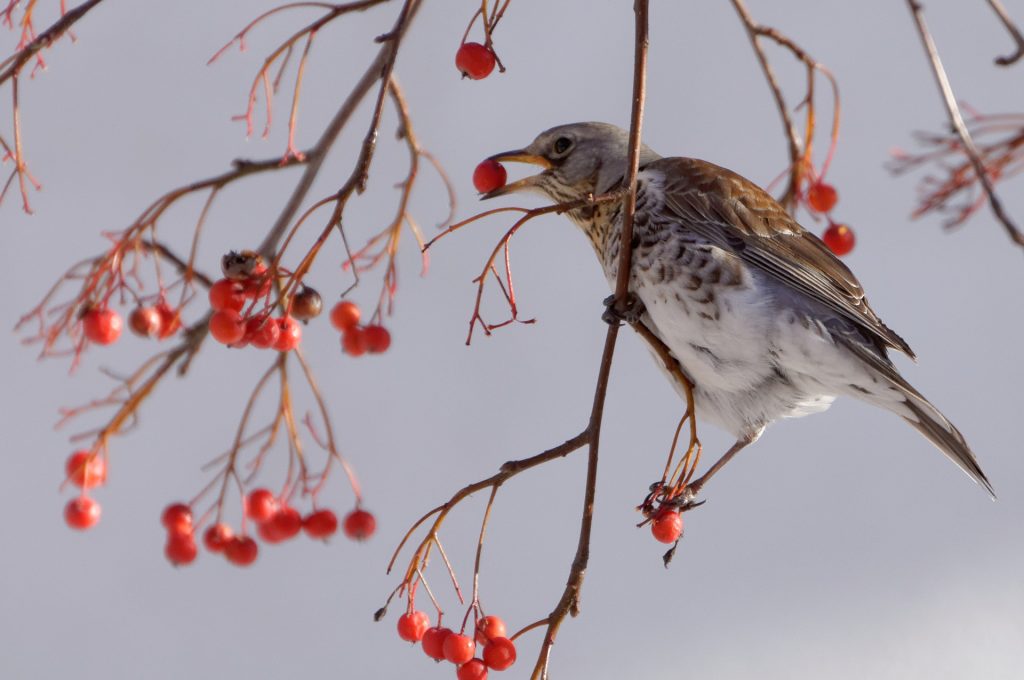Making your garden wildlife friendly for WinterAs winter starts to approach we tend to spend a little less time in the garden but there’s plenty we can do to create a haven for all sorts of wildlife in our garden - be that big or small - and we’ll enjoy many benefits from our actions. Having a garden that provides shelter and food for animals, birds and insects can bring colour and entertainment to our gardens from watching finches, robins and blackbirds squabble over some tasty fruit or seeds - visiting hedgehogs will help reduce the number of slugs eating our salads and seedlings - bees and beneficial insects will help pollinate our fruit crops and all round we’ll create a well balanced eco system in our garden, reducing the need for pesticides and pest control in general. Insects like beetles, butterflies, moths, hoverflies and bees – all need somewhere to hibernate in winter. Taking a few simple steps can help you host lots of visitors to your garden and a very worthwhile project is to set up a range of different feeding stations and feeders and perhaps some nesting boxes for your garden song birds. Having a diverse range of feeders and feeds - for example seed mixes, fat balls, suet cakes, peanuts, nyjer seeds, mealworms, sunflower hearts will mean you have a greater mix and varieties of birds visiting your garden. A single bird can eat more than 100 times its own body weight in insects in a year, so by having a welcoming garden for the birds the greenfly and caterpillars won't be such a big issue around your ornamental and edible plants. Robins and blackbirds love meal worms and finches find nyjer seeds irresistible - so providing these types of feed you’ll have plenty of visitors to your garden and adding wildlife interest along with some pest control. Nesting boxes are another great idea to provide shelter and a home for your garden song birds - open fronted nest boxes are ideal blackbirds, robins and wrens and traditional boxes with a 25mm hole are more suited to blue tits. To position them you want to place it 2-4m off the ground if it’s a nestbox with a hole. Something around 2m up should be fine once there’s no way for cats to get near it. With the open fronted nestboxes for Robins, Wrens and Blackbirds, these should be placed lower than 2m but amongst dense vegetation and somewhere cats and other predators won’t easily see or access it. Having a simple bird bath is also a nice addition to provide clean water for drinking and bathing. Winter flowering shrubs like Mahonia and heathers are a great source of nectar for any winter foraging bees along with hellebores and asters and also some berrying shrubs like Holly, Cotoneaster and Pyracantha make a great source of berries for birds, especially blackbirds. Holly variety 'J C Van Toll' is a self fertile variety, meaning it’ll produce berries by itself with no need for a second plant - nice dark green leaves and strong red berries. There are lots of different varieties of Contoneaster from the small tree with hanging branches and the shrubs for hedging or wall trailing - all will produce a great crop of red, orange or yellow berries that will attract lots of birds both for the berries and for the shelter provided amongst the branches. Planting some late winter flowering bulbs like snowdrops and crocus and iris will provide some pollen for bees and beneficial insects in those days before spring arrives with an abundance of flowering plants. Ivy is another plant that can provide flowers, berries and shelter for insects and birds so perhaps leaving some ivy on an old wall or tree rather than taking it down or spraying it with a weedkiller will serve you well in the long term. Witch Hazel and Forsythia are excellent late winter early spring flowering shrubs that help bridge the gap between winter and spring for flower colour in the garden along with being a food source for some bees and insects at that time of year. Having a small stack of old branches or stones can provide a winter home for some insects or leaving a collection of fallen leaves in a quiet corner might become a winter shelter for a hedgehog who’ll repay your consideration with some natural slug control next spring, so when tidying up the garden no harm to leave a few locations a little less tidy - I find it a great excuse to claim that certain areas aren’t messy - they’re actually a wildlife friendly zone or a bio-diversity area - even if it’s actually an area you haven’t had the energy to tackle yet! A few jobs for the week ahead:
For any help or advice, pop into Keanes Garden Centre and we'll look after you. All the best, Tom Stewart |

